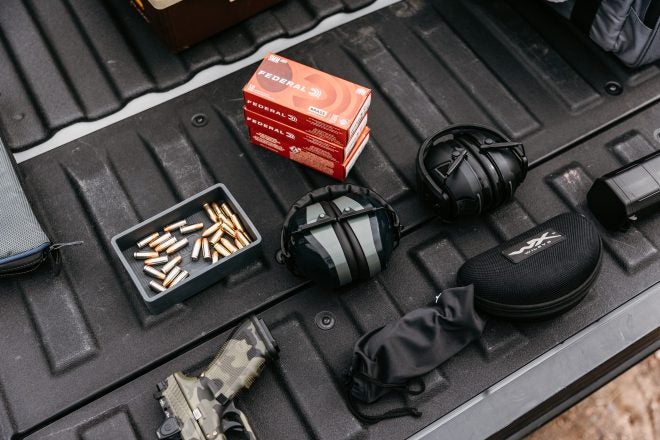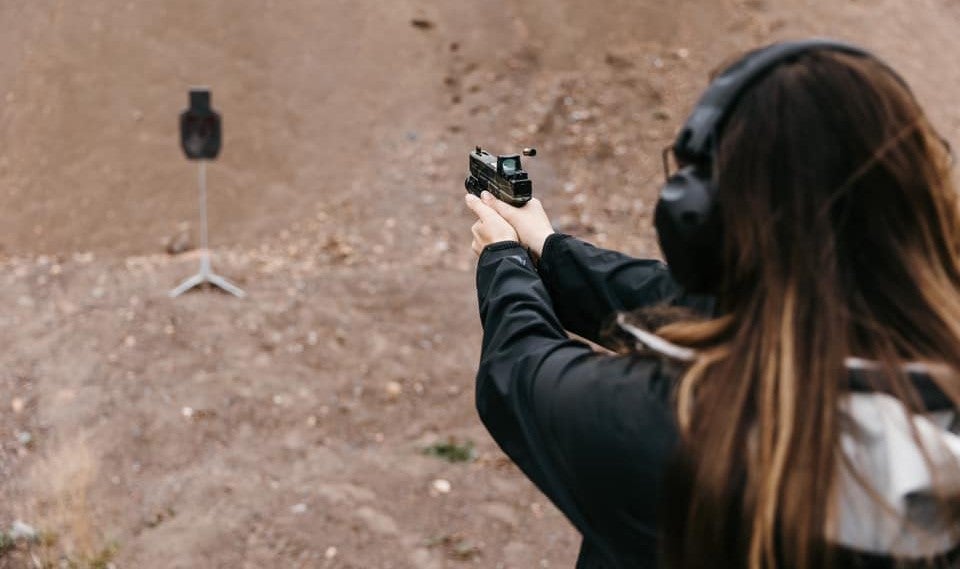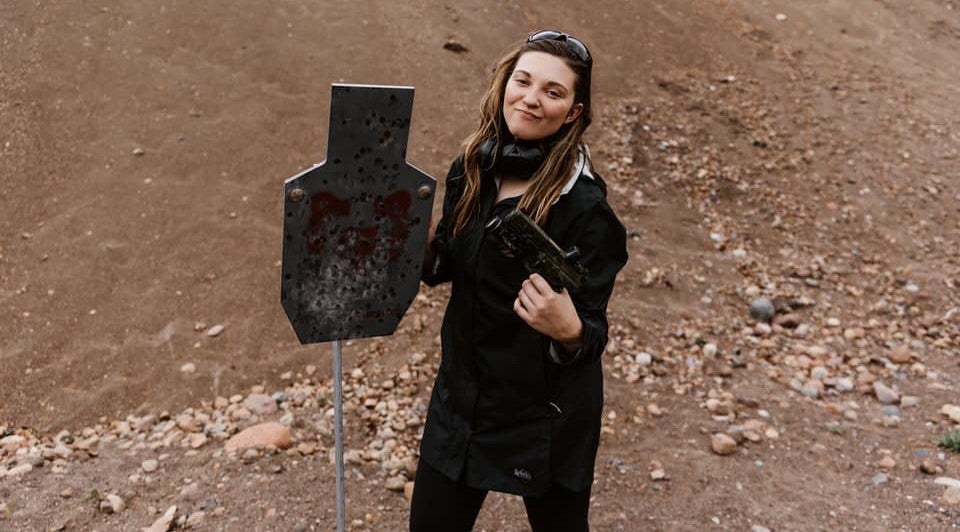Teaching Others about Firearms – The Second Question to Ask
Phil Godding 01.11.22

Last time I set the premise for training someone with handguns by proposing two questions. What do they want to know? What do I need to teach them now? The first question is spoken out loud and let’s the student, neighbor, or friend show you – the “expert” – where they are starting from in terms of experience and expectations. The second question is entirely in your head while you are engaged in a dialog.
That second question: What do I need to teach you now? Of course, we are going to start with safety; starting with how to reach for the gun. In a non-judgmental way (we are teachers after all), we remind them to stay away from the trigger and control the muzzle. While we prove to them (multiple times) the gun is unloaded during our discussions we are incrementally building the habit of safe handling before we even address the concept of “clearing” the weapon.
Let’s think for a minute about what is really needed and what is really being asked. What I have seen happen at the gun counter or in my classes is this: someone walks up to the new gun purchaser or novice shooter and says something like:
“Oh, that there is a polymer-slide, single/double-action, staggered-magazine with rolling pin extractor and a beaver-tail expresso-darkened safety release in 9mm ACP magnum, wanna try it?”
For the first time gun user what they really need to know might be “is this safe” and what they might want to ask is “how do I touch this and not kill myself.” Bottom line, this second question requires you to do several things at once: have a plan in your head about what you think needs to be said or demonstrated, and listen to what is being said in response and then be ready to change what needs to be said based on what we heard.
One of the basics of education is understanding that high levels of anxiety block the transmission of information. Similarly, too little anxiety impedes learning. Therefore, because you have two ears and one mouth you need to ask questions and listen more than you need to speak. Our students will tell us so much about their perceptions about guns if we will only listen. Rabbit hole alert: the other day someone told me that his grandfather used to say “it takes 2 years to learn to speak and 60 years to learn to listen.” I think that is never truer than when I’m teaching about firearms. Listening will increase the first-time buyer’s comfort level with me and decrease their anxiety level to a level where learning can start.
Some conversational questions that will help you answer your question (“what do I need to teach now”) are: what will you be using this particular gun for? What have you shot before? What are your memories of firearms from your childhood or family? Do you have a place to store a gun and ammunition? Do you have big, small, or medium hands? How well are you able to see those types of sights? Why does this gun appeal to you? The answers will set the stage for what you need to teach right now.
Ask any salesperson and they will tell you what you hear when you take time to listen. These answers will also tell you if you are going to get more than one conversation. Sometimes it is good just to end the gun conversation (“I get the impression you are feeling overwhelmed. Let’s grab a coffee and watch the bird feeder for a few minutes”). I would hope we would all want to have multiple conversations, each one imparting a new lesson, with newfound friends. Sometimes that second conversation takes a while.
Now, about the human brain. As good as your brain is new information is best learned in increments of seven (plus/minus a standard deviation of two). If your first sentence while teaching or explaining has seven facts, names, or ideas you have already exceeded what your student can learn right then. Parse out what you want to say depending on what you think will be your future conversations.
I remember watching a staff member at one of my favorite gun shops engage in this series of questions with an older woman. All the questions (and then some) I listed above were asked by Sam as he tried to figure out what she needed to know. It turned out she was recently widowed and wanted to go on one of those multi-day hikes in an area that was prone to a bear or wolf making an appearance. She didn’t buy that day, but she did establish a good relationship with Sam who could help her with that purchase when she is ready. She made two telling statements that Sam heard: she’s afraid of bears and any caliber bigger than a rimfire. She needed a dialog rather than a sales pitch. Putting her at ease with whatever decision she makes will take several conversations. Sam had an artful discussion of “what do I need to teach you now?” Well done, Sam!
The answers to those few questions I listed above will tell you exactly where you should start. Yes, start with the safety rules, but you should see them relax and be more open to your instruction as you ask them questions, the whole time working towards what you know you need to teach them that day. If they remain fearful or anxious step back and start over. While they are talking, and you are listening, you should be doing some mental calculus of your own based on their experience, needs, and motivation. You should be answering their questions with an eye for what they need to know right now; not the questions you want them to ask. Consider this: you are trying to help a neighbor start a snow blower. After you get it going (you will be able to get it going, right?) they may ask how did you did that? You could start talking about spark, gummy carburetors, compression ratios, ethanol/air/fuel mixtures, or you could say the gas tank was empty. Both answers were correct yet one answer was more useful depending on the knowledge base of the neighbor and how often you want to interact with the owner of that snow blower. The same happens when you teach about a gun.
A quick note on fear and anxiety – both are useful. New skills are learned when the human brain is “tuned in” and ready to focus – that happens at moderate levels of anxiety. Too much or too little and no learning takes place.
The same holds for teaching about safe gun handling and introducing a person to a lifetime of discovery of the pleasure of shooting sports. You don’t need to dump everything you know on the new gun owner or someone thinking about buying their first gun. Be ready to tell them what they need to know given their level of expertise. Be ready to answer their real question at an appropriate level, remembering that people learn best at a mild to moderate level of anxiety and have a memory buffer of seven new items. Keep the new student engaged with a relaxed relationship, but with enough passion and intensity to keep them engaged. Just like teaching them how to start that snowblower this winter. What do they want to know? What do you need to teach?

